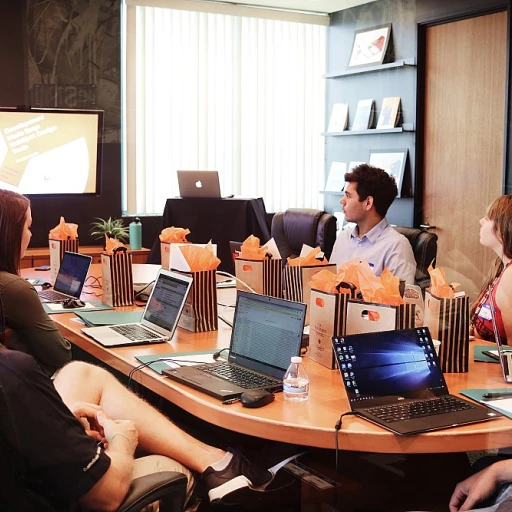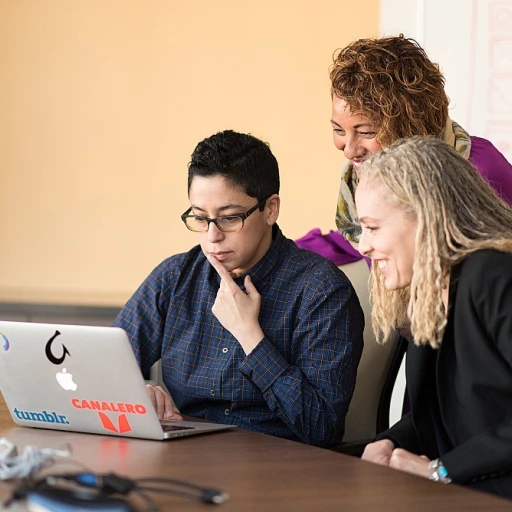Understanding the Dynamics of Remote Meetings
Recognizing the Unique Nature of Virtual Gatherings
Remote work meetings have become a staple in the professional landscape over the past few years. Understanding their dynamics is crucial for teams seeking effective collaboration. Virtual meetings, unlike their in-person counterparts, demand a different approach to ensure that team members remain engaged and productive. One of the primary aspects to consider is how the lack of physical presence affects interactions. The absence of non-verbal cues, such as body language and subtle gestures, can lead to misunderstandings or miscommunications. Thus, clear articulation becomes a vital tool for participants. Additionally, leaders must be aware of how cultural differences can play out in a virtual setting. This involves recognizing time zone challenges and scheduling meetings at times that suit the majority of the participants, fostering inclusivity. Ensuring that every voice is heard, particularly those who may be more reserved, promotes a healthy team reflection. Use of interactive platforms can significantly enhance participation levels. Before starting a session, initiating with "opening reflections" can help set a comfortable atmosphere. These activities can warm up the team, allowing them to share insights and prepare mentally for the discussions ahead. For more on laying the groundwork, visit this excellent resource. To optimize meetings, it's important to have a clear agenda. This includes understanding the meeting's objective, being mindful of time, and designating speakers. Reflection meetings focused on previous action items can drive future improvements and reinforce accountability amongst team members. By answering the right questions and applying leadership reflection, a team can continuously refine their meeting structure. While the unique facets of remote meetings pose challenges, they also offer opportunities for creative solutions and dynamic team interaction.Building Engagement and Participation
Fostering Active Participation and Collaborative Engagement
One of the critical components of effective remote work meetings is cultivating an atmosphere where team members feel encouraged to engage and share their insights. An engaged team can drive productive discussions and yield better meeting outcomes. Encouraging participants to speak up can be achieved by setting the agenda early and asking open-ended questions. This approach allows for a reflection of varying perspectives and draws out meaningful contributions from all members, enhancing overall collaboration.
Leadership plays a significant role in participation dynamics. By empowering team members through reflection activities and opening reflections, leaders can create a space where each voice is valued. The reflexive nature of these discussions not only helps in identifying areas for improvement but also fosters a culture of trust and openness among teams. Incorporating effective meeting topics for remote teams can be instrumental in guiding conversations that reflect on past performances and strategize for future successes.
Another way to stimulate participation is by utilizing reflection quotes. These can serve as prompts to initiate discussions or as a way to start meetings on a thoughtful note. Furthermore, incorporating team reflection at the end of meetings aids in reinforcing the session's objectives while providing an opportunity for team members to voice their reflections. This cyclical nature of communicating and receiving feedback ensures that meetings are not just a series of tasks but a platform for continuous improvement and team growth.
In conclusion, fostering engagement in virtual meetings is not just about encouraging participation but about creating an environment where team members feel respected and their contributions recognized. By weaving reflection, insights, and open dialogue into meetings, teams can transform these sessions into a cornerstone of their collaborative work.
Effective Use of Technology in Virtual Meetings
Leveraging Technology to Enhance Meeting Productivity
In today's dynamic work environment, the effective use of technology in virtual meetings can significantly impact both engagement and productivity. With team members distributed across different locations, ensuring seamless collaboration becomes paramount. Utilizing the right tools can make a considerable difference in how successfully a meeting unfolds. Exploring platforms and tools that cater to your team’s specific needs is crucial. Platforms like Zoom, Microsoft Teams, and Google Meet have been praised for their robust functionalities, making them a reliable choice for remote teams. However, it’s important to dive deeper into the features offered and select the ones that align with your meeting requirements. Adding features like screen sharing, breakout rooms, or interactive whiteboards can help team members share their insights efficiently and make meetings more interactive. Furthermore, integrating scheduling and productivity apps such as Calendly or Slack can streamline the preparation and execution of meetings. These tools help manage invites, track availability, and even send reminders to ensure timely attendance, all of which contribute to better time management. Another aspect to consider is ensuring that the technology used enhances communication and doesn't become a barrier. Providing training sessions or resources can help participants navigate these tools confidently, avoiding technical setbacks during meetings. An often-overlooked practice is to ask for participant reflections post-meeting. This helps gather invaluable feedback that can steer leadership to address any technical hitches or areas for improvement in future meetings. The fusion of the latest technology with an understanding of the meeting dynamics can transform these virtual gatherings into spaces of innovation and collaboration. To delve into how leadership can further shape and inspire remote teams, explore exceptional leadership traits.Time Management and Scheduling Challenges
Navigating Scheduling and Time Zones
Time management in remote work meetings presents unique challenges, particularly when teams are dispersed across different time zones. It's crucial for leadership to carefully schedule meetings by considering everyone's location to ensure full participation. Thoughtfully planned time slots can prevent burnout and ensure that all team members feel valued.
Spare a Moment for Opening Reflections
Starting with a brief period of opening reflections allows attendees to mentally arrive at the meeting. By sharing a reflection quote or a thoughtful question, leaders can foster an environment of inclusivity and open dialogue. This small practice can set the tone for a more engaged and productive session.
Staying on Track
Staying disciplined with meeting agendas is pivotal for effective time management. Clearly outlining action items and maintaining focus can help teams prevent meetings from becoming more protracted than necessary. This approach can also reserve space for meeting reflections at the end, where participants can share their insights and ponder areas for improvement.
When all participants are mindful of time, it cultivates a culture of respect and productivity. Allowing adequate time for closing reflection activities not only wraps up the meeting efficiently but also leaves room for improvement in future sessions.
Creating Inclusive Meeting Environments
Fostering an Inclusive Environment for All Team Members
Creating a welcoming atmosphere in virtual meetings can significantly impact a team's dynamics. Inclusivity ensures that all participants feel valued and heard, leading to more effective collaboration. Here's how you can achieve this in your work meetings:- Encourage Diverse Participation: Invite all team members to share their insights during the meeting. Begin the session with opening reflections that prompt team members to contribute their thoughts. This can be as simple as asking, "What’s one reflection or insight you’d like to share before we start?"
- Be Mindful of Time Zones and Cultural Differences: When scheduling, consider the time zones of global teams. This helps in making everyone feel included and ensures that no one is required to join meetings at inconvenient times. Reflective quotes about time management might serve as gentle reminders to be aware of these differences.
- Use Accessible Technology: Ensure that the meeting platform is accessible to all participants. Features such as closed captions for non-native speakers or those with hearing impairments can be beneficial. Effective use of such technology can prevent alienation and promote an inclusive environment.
- Leadership Reflection: Encourage leaders to regularly assess and reflect on their own meeting facilitation techniques. This includes soliciting feedback from participants regarding areas of improvement and making necessary adjustments.
- Open the Floor for Questions: Providing space for questions at the end of each section during the meeting helps in clarifying doubts and encourages active participation. This also allows team members to voice concerns or offer valuable insights without hesitation.
Reflecting on Meeting Outcomes and Feedback
Evaluating and Learning from Meeting Reflections
Reflecting on the outcomes of meetings is crucial for any team striving for continuous improvement. It offers an opportunity to evaluate how well the meeting aligned with its objectives and to identify areas needing enhancement. Here’s how you can leverage reflection to improve your meetings:- Gather Participants' Insights: Encourage team members to share their reflections on what aspects of the meeting were effective and which areas need more attention. Their feedback is a valuable resource for identifying patterns and developing action items.
- Ask Thought-Provoking Questions: Pose questions such as "Did everyone have the chance to contribute?" or "Were the technological tools we used supportive of our engagement goals?". These questions help pinpoint strengths and weaknesses in your remote meetings.
- Promote Leadership Reflection: Leadership should model the reflective process by openly discussing their takeaways from meetings. This transparency encourages a culture where reflection meetings are seen as normal and beneficial.
- Document Reflections and Outcomes: Keeping a record of reflections on each meeting ensures that no critical insight gets lost over time. It helps in tracking changes, improvements, and persistent challenges, making reflections work more structured.
- Action on Feedback and Insights: Simply gathering feedback isn’t enough. Commit to iterating on meeting practices based on the reflections, continuously seeking to mold an environment that supports inclusive participation and strategic team alignment.










